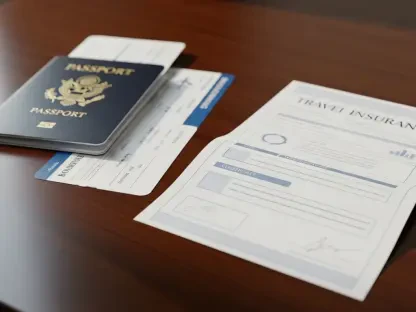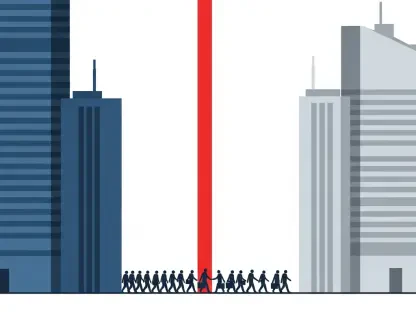Picture this: a slight bump in a parking lot or a minor rear-end collision at a stoplight, the kind of incident most would shrug off as inconsequential, yet these low-impact crashes, often occurring at speeds of 15 miles per hour or less, can hide a dangerous reality. These accidents typically leave vehicles with barely a scratch, leading many to assume no real harm was done. Yet, beneath this deceptive surface lies a startling truth. Serious, even life-altering injuries can result from these seemingly trivial accidents, challenging the common perception that low speed equates to low risk. Statistics paint a grim picture—rear-end collisions alone contribute to 17% of fatalities in vehicle-to-vehicle incidents, a figure that shatters the myth of safety in slow-speed crashes. This discrepancy between appearance and consequence demands a closer examination of why these accidents are far more dangerous than they seem, urging a shift in how society views and responds to them.
The human body, unprepared for sudden jolts even at low speeds, becomes incredibly vulnerable in these situations. A quick jerk from a rear-end impact can send the head and neck whipping back and forth, sparking injuries that might start as mere discomfort but could escalate into severe trauma if not addressed. Immediate medical attention becomes essential after any collision, regardless of how minor it appears, to catch issues before they worsen. Beyond drivers, pedestrians also face significant threats, as even a slow-moving vehicle can inflict substantial harm, particularly to more vulnerable individuals like children or the elderly. The notion of low-impact translating to low-risk fails to hold up under scrutiny, revealing a broader scope of danger that extends to everyone involved in or near these incidents. Uncovering the hidden perils of such crashes is not just about awareness—it’s about rethinking assumptions and taking proactive steps to protect health and legal rights in the aftermath.
Unseen Consequences of Minor Collisions
The Reality of Injury Risk
Low-impact crashes, despite their benign appearance, carry a heavy toll on the human body due to the unexpected forces at play. Whiplash stands out as a frequent injury, especially in rear-end collisions, where the head snaps violently, sometimes leading to traumatic brain injuries that linger far beyond the initial shock. Concussions are another concern, often resulting from the head striking hard surfaces like a window or steering wheel during a sudden stop. Neck injuries, such as herniated discs or fractured vertebrae, pose even graver risks, with potential outcomes including lifelong paralysis in severe cases. These examples highlight a critical truth: the severity of injury in a crash does not always correlate with the speed of the vehicles involved. Understanding this disconnect is vital for recognizing the full spectrum of dangers present in even the smallest of accidents.
Beyond the immediate aftermath, other injuries like fractures and broken bones can emerge from the sheer force of impact, even at minimal speeds. The body, caught off guard, absorbs the brunt of the collision, with limbs or torsos slamming against interior components of a car. Such physical trauma might not be apparent right away, often masked by adrenaline or shock, leading victims to underestimate the extent of their harm. This delayed recognition can complicate recovery, as untreated fractures may heal improperly, causing long-term mobility issues or chronic pain. Additionally, the risk isn’t limited to those inside vehicles; pedestrians struck by slow-moving cars can suffer similar fates, with the impact jarring enough to cause significant damage. Acknowledging these varied and serious outcomes pushes the need for vigilance and prompt medical evaluation after any collision, no matter how insignificant it may seem at first glance.
Delayed Symptoms and Diagnosis Challenges
One of the most insidious aspects of injuries from low-impact crashes is their tendency to hide in plain sight initially. Symptoms of conditions like whiplash or concussions often don’t surface for days or even weeks after the incident, leaving victims unaware of the brewing problem. By the time pain or dizziness emerges, connecting these issues back to the accident becomes a murky task, both for medical professionals and for those seeking to document their case. This delay not only jeopardizes timely treatment but can also allow conditions to worsen, turning a manageable injury into a chronic health concern. The subtle onset of symptoms underscores why a medical checkup immediately following any crash is non-negotiable, even if no pain or discomfort is felt at the moment of impact.
Compounding the issue is the challenge of obtaining an accurate diagnosis when symptoms are delayed or initially mild. Medical professionals may struggle to pinpoint the exact cause of discomfort without a clear timeline linking it to the crash, especially if patients delay seeking care. Insurance companies often exploit this ambiguity, casting doubt on the legitimacy of claims by suggesting unrelated causes for the injury. Victims find themselves in a frustrating position, needing to prove that their health issues stem directly from the incident while battling skepticism from adjusters. This diagnostic hurdle emphasizes the importance of thorough documentation and early medical intervention, as waiting too long can weaken both health outcomes and the strength of any potential legal or insurance claim. Addressing these hidden injuries promptly can make all the difference in recovery and resolution.
Legal and Insurance Hurdles
Proving Injury and Liability
Establishing a direct link between a low-impact crash and resulting injuries presents a formidable challenge for victims seeking justice. With vehicles often showing minimal damage, insurance companies frequently argue that the reported injuries are either exaggerated or unrelated to the incident, attributing them instead to pre-existing conditions. Building a compelling case demands robust evidence, including detailed medical records that document the progression of injuries, police reports that outline the circumstances of the crash, and witness statements that corroborate the events. Additionally, footage from the accident scene or damaged personal items can serve as tangible proof of impact. Without this comprehensive collection of evidence, victims risk having their claims dismissed or severely undervalued, leaving them to bear the financial and emotional burden of recovery alone.
The process of proving liability adds another layer of complexity to these cases, as determining fault in low-impact scenarios isn’t always straightforward. Multiple parties could share responsibility, from negligent drivers to municipalities failing to maintain safe road conditions. Insurance adjusters may attempt to shift blame or minimize the severity of the incident, further muddying the waters. Victims must navigate a maze of legal nuances to establish who is at fault, often requiring expert analysis of traffic laws and accident reconstruction. This intricate dance between evidence and accountability highlights the uphill battle faced by those injured in seemingly minor crashes. Securing professional assistance becomes almost essential to counter the resistance often encountered, ensuring that the true impact of the accident is recognized and addressed appropriately in any claim or legal proceeding.
Insurance Tactics and Lowball Offers
Insurance companies often employ calculated strategies to minimize payouts in low-impact crash cases, creating significant obstacles for victims. Adjusters may question the causal relationship between the accident and the injuries, suggesting that the lack of visible vehicle damage indicates negligible harm. This skepticism frequently leads to initial settlement offers that fall far short of covering essential costs like medical bills, lost wages due to time off work, or compensation for pain and suffering. Accepting such an offer, often presented as a quick resolution, can bar victims from pursuing further compensation later, even if their condition worsens over time. This tactic preys on the immediate financial stress many face post-accident, pushing them into decisions that undervalue their true losses.
Beyond inadequate offers, insurance providers might delay processing claims as a means of wearing down claimants, hoping they’ll settle for less out of frustration or desperation. They could also request extensive documentation or repeated medical evaluations to cast doubt on the injury’s severity or origin, dragging out the resolution process. Such approaches often leave victims feeling overwhelmed and unsupported, especially when grappling with mounting expenses and physical recovery. Recognizing these tactics as deliberate attempts to reduce liability is crucial for anyone navigating a claim. Seeking guidance to counter these strategies ensures that the full extent of damages—economic and non-economic—is accounted for, preventing insurers from exploiting the misconception that low-impact means low consequence in their favor.
The Critical Role of Legal Help
Navigating Claims with Professional Support
For individuals caught in the aftermath of a minor crash, particularly in bustling urban centers like Chicago, the expertise of a personal injury lawyer can prove transformative. These professionals play a pivotal role in identifying liable parties, which might include not just other drivers but also pedestrians, trucking companies, or even local authorities responsible for hazardous road conditions. They meticulously gather evidence, from medical bills and accident scene footage to expert testimonies, building a robust case that withstands scrutiny. Furthermore, they calculate a comprehensive range of damages, encompassing immediate costs like hospital expenses, long-term impacts like lost earning capacity, and intangible harms such as emotional distress. This thorough approach ensures that victims aren’t left grappling with unaddressed losses amid an already challenging recovery.
Equally important is the role legal counsel plays in negotiating with insurance companies, which often resist fair settlements in low-impact cases. Skilled attorneys counteract lowball offers and arguments about pre-existing conditions by presenting irrefutable evidence and leveraging their understanding of insurance practices. When negotiations stall, they stand ready to escalate the matter to court, navigating the intricacies of litigation to advocate for rightful compensation. This preparedness to go the distance offers victims a significant advantage, leveling the playing field against powerful insurers. The presence of legal support not only alleviates the burden of complex paperwork and legal jargon but also instills confidence that the case will be handled with the diligence it deserves. Ultimately, this assistance transforms a daunting process into a manageable path toward justice and financial relief.
Litigation as a Last Resort
When insurance negotiations fail to yield a fair outcome, turning to litigation often becomes the necessary next step for victims of low-impact crashes. Personal injury lawyers guide clients through this intricate process, preparing a compelling case that details the accident’s circumstances, the resulting injuries, and the full spectrum of damages incurred. This preparation involves strategic use of evidence, from medical expert opinions that link injuries directly to the crash to accident reconstruction reports that clarify fault. The courtroom setting demands precision and persistence, as insurers may continue to challenge claims with vigor. Legal representation ensures that every aspect of the victim’s experience—physical pain, financial strain, and emotional toll—is articulated effectively to pursue a just resolution.
The decision to litigate, while daunting, sends a powerful message that victims will not accept inadequate compensation for their suffering. It also serves as a deterrent to insurance companies, discouraging future attempts to undervalue claims in similar cases. Lawyers adept in trial proceedings anticipate defense tactics, countering arguments about minimal vehicle damage with scientific explanations of injury mechanisms at low speeds. This expertise can tip the scales in favor of the injured party, securing awards that reflect the true cost of recovery, including potential punitive damages in cases of gross negligence. Reflecting on past cases, many found that litigation, though a last resort, provided the closure and support needed to rebuild after an accident. Moving forward, ensuring access to such legal resources remains a critical consideration for anyone facing the hidden fallout of a minor collision.









